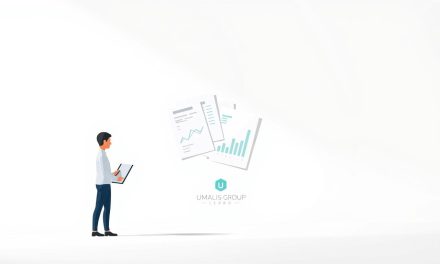2025 marks a turning point. Rapid tech change, a green transition, and shifting demographics are reshaping the labor landscape faster than in previous cycles.
Workers and employers are adapting: hybrid work is now routine for many companies, and hiring priorities favor demonstrable skills over degrees.
The World Economic Forum and real policies show that some roles will emerge while others fade. This guide pulls key data and practical signals, so readers in France can act with confidence.
Think of this piece as an actionable roadmap. It highlights where growth and reskilling matter, how AI and sustainability change sectors, and which capabilities make a resilient career plan.
Table of Contents
Key Takeaways
- 2025 brings fast change driven by technology, sustainability, and demographics.
- Hybrid work is widely formalized; skills and output matter more than degrees.
- AI adoption and green growth create new roles and reskilling needs.
- Use labor data and company policies to target resilient sectors and skill gaps.
- Build a portfolio of work and AI literacy to stay competitive.
- For localized insight, see a focused analysis at job market analysis.
The state of job market trends now: a decisive turning point
2025 is the year signals sped up: policy shifts, new technologies, and demographic moves now change roles in months, not years.
Use data as a map. Track postings patterns, hiring cycles, and skills demand to turn raw metrics into specific career actions. Companies have moved hybrid and AI from pilots into operations, so employers now define roles around output and tools, not only titles.
From gradual evolution to accelerated change in 2025
Inflation and interest rates shape hiring: some firms pause broad hiring, while others invest in strategic roles tied to growth. That split creates pockets of high demand.
How informational intent helps you turn data into career strategy
Benchmark yourself using job ads, company blogs, and investor updates as living data. Build near-term wins (certificates, micro-projects) and medium bets (systems thinking, AI literacy).
Track rates and signals monthly — faster cycles favor responsive, outcome-driven professionals.
| Signal | What it shows | Action | Timing |
|---|---|---|---|
| Posting volume | Demand for specific roles | Apply or reskill to match listings | Monthly |
| Company hiring reports | Strategic priorities | Target firms with growth hiring | Quarterly |
| Tool adoption (AI/hybrid) | New skill requirements | Document applied projects | Ongoing |
| Macro rates | Budgeting and headcount shifts | Focus on resilient sectors | Monthly |
A cooling hiring climate and shifting policies reshaping demand
A pullback in postings and slower fills is changing where and how talent gets hired. Hiring has slowed from post‑pandemic highs, with longer time‑to‑fill and fewer openings in several sectors.
Technology and financial services are seeing the sharpest competition. Capital‑intensive industries delay hires as elevated interest rates and inflation raise costs. At the same time, immigration policy changes have tightened supply in hospitality, construction, agriculture, and parts of tech.

Sectors feeling the slowdown and where opportunities persist
Not all industries paused. Essential services, regional firms, and counter‑cyclical fields still recruit. Health, utilities, and some public services hire to maintain operations.
Labor shortages in hospitality, construction, agriculture, and technology create targeted openings. Qualified workers who can demonstrate immediate impact will find pockets of demand despite broader cooling.
- Prioritize tailored applications and clear, measurable achievements.
- Track sector‑level rates (vacancy and quit rates) and local hiring signals to pivot fast.
- Use tools that monitor demand and role requirements so your skills and projects align with employer needs.
Focus on portfolio projects that show cost savings, process gains, or risk reduction. That credibility matters when overall employment cools.
Network smartly with companies still growing—teams tied to revenue, operations, or compliance. Many firms reallocate budgets to data, AI augmentation, risk, and operations roles that boost resilience and efficiency.
Artificial intelligence and automation: disruption, augmentation, and new roles
AI and automation are rewriting daily workflows across sectors, shifting routine work to systems and raising the value of human judgment. This change affects how teams allocate time, how talent is evaluated, and which skills matter most.
Tasks automated versus tasks augmented
Automation removes repetitive, rule-based tasks: invoice processing in finance, basic ticketing in customer service, and scheduled reports in operations.
Augmentation uses tools as a co-pilot—suggesting answers, summarizing data, or flagging anomalies—while humans keep final decisions and stakeholder conversations.
Where roles are changing and what emerges
Routine-heavy workflows shrink, while cross-functional work grows. New roles include ML engineers, prompt engineers, AI product managers, data analysts, and ethics leads.
Human-AI collaboration and productivity
Productivity gains come when teams blend tools with oversight: accuracy and speed improve, and people focus on strategy and creativity.
Practical advice: build small projects (automate a report, create a simple classifier) to show concrete data results. Employers should start with narrow, high‑ROI use cases and train staff on governance, bias checks, and privacy.
Remote and hybrid work stabilize: flexibility with purpose
Flexible schedules and location choices are now core components of how many teams organise work. Far from temporary, hybrid models are formalized: roughly 52% of global companies now have set arrangements. This shift balances company needs with employee preferences.

Why hybrid models endure: productivity, retention, and talent access
Data matters. Sixty-two percent of employees say they’d accept a pay cut to stay remote, and 76% of caregivers report clear quality-of-life benefits. Firms that forced full office returns saw higher quits and lower output.
Why it lasts: better retention, wider talent pools across regions, and measurable productivity gains when measured by outcomes rather than time at a desk.
Designing digital-first cultures that balance collaboration and focus
Adopt simple digital practices: async collaboration, focused meeting norms, and clear documentation. Use tools like wikis and project hubs to reduce context switching across time zones.
« Measure impact, not presence. » This mindset protects deep work and keeps teams aligned.
- Set explicit cadences: in-person sprints, weekly virtual stand-ups, and monthly design sessions.
- Ask employees to state their best-performing patterns and align them with team goals.
- Iterate policies: collect data on bottlenecks, communication gaps, and participation rates.
| Signal | What to track | Practical step |
|---|---|---|
| Adoption rates | % of companies formalizing hybrid | Benchmark schedules and pilot norms |
| Employee preference | Remote acceptance and caregiver gains | Offer flexible options and caregiving support |
| Productivity by outcomes | Delivery, quality, and cycle time | Shift reviews to outcome-based metrics |
Clear norms reduce friction: spell out availability, documentation expectations, and decision rights. Hybrid design is iterative; when done well it expands inclusion, lowers churn, and helps the workforce focus on growth.
The rise of contract and gig work: flexibility, risks, and workforce strategies
Contract and gig arrangements have grown quickly, reshaping how firms and professionals plan projects and careers.
Why companies choose contractors: access niche talent fast, keep headcount nimble, and speed delivery on focused initiatives. About 40% of managers plan to use contract professionals for key projects, especially in AI, data, and marketing.
When contractors make sense
Good fits: time-bound initiatives, pilot programs, and scarce technical expertise. Use permanent hires when continuity, institutional knowledge, or long-term leadership matters.
- For professionals: autonomy and selective work can mean higher pay but more income variability and fewer benefits.
- For employers: fast ramp-up and targeted skills, but plan onboarding, security, and metrics to protect ROI.
« Build portable portfolios, clear scopes, and rate cards tied to value — not just hours. »
Practical steps: keep emergency funds and simple legal templates. Companies should create contractor kits with access, docs, and success metrics. Track rates and demand by industry and use networks and platforms to maintain a steady funnel.
Green transition and sustainability: where the next wave of jobs will grow
A massive green shift is reshaping where investment flows and careers develop across France and Europe.
The transition could create about 170 million new jobs globally this decade while displacing roughly 92 million roles. That magnitude demands proactive reskilling and regional planning.

Renewable energy, green construction, and compliance
Fast-growing sectors include solar, wind, grid modernization, green construction, and environmental compliance. Policy and corporate net‑zero initiatives drive demand across supply chains and local development.
Balancing creation with displacement
Practical steps: workers should build stackable credentials—safety, energy auditing, and environmental management systems—and show hands‑on projects.
- Companies should pair hiring with upskilling (e.g., electricians learning solar).
- Automation and smart grids create data roles in monitoring, optimization, and reporting.
- Cross-sector openings span green finance, ESG legal work, and carbon accounting platforms.
Tip: monitor regional incentives and local supply‑chain shifts and consult a focused job market analysis to target where training programs scale first.
Demographic shifts, wellness, and DEI: building inclusive, age-diverse teams
Shifts in population age and generational expectations are changing how teams define purpose and daily work. Employers now balance experience with digital fluency to keep operations adaptive and humane.
Aging workforces, Millennials leading, and Gen Z entering
Age-diverse teams mix deep institutional knowledge with fresh technical habits. Millennials in leadership bring new priorities around purpose and flexibility. Gen Z adds expectations for learning paths and fast feedback.
Mental health and wellness drive retention
Wellness programs—mental health days, counseling, stress reduction—improve engagement and reduce turnover. Companies that offer clear benefits see higher productivity and steadier employee retention.
DEI as a core business strategy
Inclusive practices link to better innovation and decision quality. Standardize equitable hiring, accessible policies, and transparent promotion criteria to broaden participation.
« Measure inclusion by engagement, promotion rates, and retention so initiatives become real performance gains. »
- Pair cross-generational mentoring to pass tacit knowledge and modernize workflows.
- Offer tailored development and upskilling that match life stages and learning needs.
- Use clear hybrid work norms so all generations collaborate without friction.
| Focus area | Practical step | Outcome |
|---|---|---|
| Mentoring | Pair seniors with junior digital leads | Faster skills transfer and reduced ramp time |
| Wellness | Mental health days and counseling access | Higher engagement and lower churn |
| DEI metrics | Track promotion rates and retention by cohort | Data-driven inclusion and better talent pipelines |
Data-driven hiring practices and skills-first recruitment
A skills-first approach is replacing degree-first filters in many French and global firms.

Four in five employers now prioritize demonstrated abilities over diplomas. Big names like Google and Apple, and U.S. states such as Pennsylvania and Minnesota, have adopted skills-first policies.
ATS optimization, big data, and predictive analytics in talent decisions
Companies use big data and predictive models to forecast fit, reduce turnover, and spot internal gaps. Tools like Jobscan and SkillSyncer help candidates match resumes to automated screens.
From degrees to demonstrable skills: portfolios, micro-credentials, and outcomes
Candidates should build living portfolios with case studies, metrics, and links to code or campaigns. Highlight headline metrics, short project summaries, and endorsements that map to role needs.
Tip: employers can reduce bias by standardizing screens and using structured interviews tied to competencies.
« Instrument recruiting funnels and onboarding to measure time-to-productivity and long-term performance. »
For regional insight and tactical steps, consult a focused job market analysis.
Closing the skills gap: reskilling and upskilling for the present labor market
Closing the skills gap is now a strategic priority for firms and people navigating rapid change. The World Economic Forum estimates 44% of skills must change, and about 23% of roles will shift significantly in five years. That creates both risk and opportunity.
Priority capabilities and practical outcomes
Analytical thinking turns data into decisions—faster problem solving and clearer KPIs.
Creative thinking improves product ideas, campaign wins, and user experience.
Tech literacy and AI/data skills let workers automate routine tasks and build measurable impact.
Systems thinking reduces siloed work and speeds cross-team delivery.
How education, employers, and workers align
Make learning measurable. Use micro-learning modules, capstone projects, and mentorship so study maps to real outcomes.
- Create alternating plans: foundations one week, applied project the next to build portfolio evidence.
- Support internal academies and tuition aid to speed adoption and lift retention.
- Track postings and competency frameworks quarterly to prioritise what to learn next.
« Turn every training into a small, portfolio-ready project that proves impact. »
Practical strategies: join communities that give feedback on live work, use simple tools for versioned learning, and map each course to a career narrative that shows growth and readiness for higher responsibility.
For a list of in-demand areas to prioritise, see most in-demand skills. Small, steady development is now the baseline for a resilient workforce in France and beyond.
Conclusion
Several forces now converge to reshape how people work and where value is created. AI, sustainability goals, shifting demographics, and hybrid norms together define the core job market trends for 2025.
For individuals, the path is clear: map learning to live signals, build portfolio proof, and network with purpose. Small, delivered projects show impact faster than long résumés and help cut through selective hiring.
Companies that pair flexibility with wellness and inclusive practices boost productivity and retention. Some industries cool while green and data functions expand, so track rates and local signals monthly.
Start by picking priority skills, scheduling short learning sprints, and shipping tangible outcomes. With steady work and smart alignment, professionals across France can convert change into durable career growth.
FAQ
What are the biggest shifts shaping the hiring environment in 2025?
Employers face a mix of slower hiring in some sectors and rapid growth in others. Companies are focusing on productivity, cost control, and strategic investments in technology. That means more selective hiring for full-time roles, wider use of contractors, and stronger demand for skills in data, AI, and sustainability. Workers who emphasize measurable outcomes and up-to-date technical skills gain an edge.
How can workers turn information and labor data into a career strategy?
Use publicly available labor reports, company filings, and industry dashboards to spot rising roles and skill gaps. Match those signals to concrete capability-building: short courses, portfolios, and certifications. Track hiring signals like increased headcount in product, engineering, or compliance teams, and tailor applications to demonstrate impact and measurable results.
Which sectors are cooling and where do hiring opportunities remain?
Sectors tied closely to discretionary spending or speculative growth have cooled. Opportunities persist in healthcare, renewable energy, cybersecurity, and parts of manufacturing investing in automation. Look for roles in operations, compliance, and technical maintenance where companies need to sustain service and meet regulation.
What tasks are being automated and which ones are being augmented by AI?
Repetitive, rules-based tasks like data entry, invoice processing, and basic report generation are being automated. AI augments complex cognitive work — data synthesis, code suggestions, and content drafts — helping professionals move faster and focus on decision-making, strategy, and stakeholder communication.
What new roles are emerging because of AI adoption?
Expect growth in AI engineering, machine learning operations (MLOps), data analysis, prompt engineering, and AI ethics and governance. Roles that combine domain knowledge with technical fluency — for example, clinicians with data skills or marketers who understand model outputs — will be in demand.
How does human-AI collaboration affect productivity and job design?
When designed well, collaboration boosts output by automating low-value tasks and enabling workers to focus on judgment, creativity, and relationship building. Organizations must redesign workflows, update skills, and set clear governance to avoid errors and ensure AI complements rather than replaces critical human roles.
Why are hybrid and remote arrangements remaining common?
Hybrid models persist because they balance flexibility, talent access, and in-person collaboration when needed. Employers see benefits in retention and reduced office costs, while workers value flexibility for focus and personal needs. Success depends on intentional culture, good tech, and clear expectations.
How can companies build effective digital-first cultures?
Start with reliable collaboration tools, documented norms for meetings and async work, and inclusive rituals that keep distributed teams connected. Train leaders to manage outcomes rather than time, and invest in onboarding that gives new hires clear access to knowledge and stakeholders.
When do contractors or gig workers make sense for organizations and individuals?
Contractors suit work with defined scopes, short timelines, or specialized skills not needed full time. Organizations use them for flexibility and to control costs; individuals gain variety and higher hourly rates. Both sides should clarify scope, IP, and compliance to avoid misclassification and ensure sustainable relationships.
Where will green transition hiring grow and what roles are rising?
Growth will center on renewable energy installation and maintenance, green construction, environmental compliance, and sustainable supply chain management. Roles include solar and wind technicians, energy analysts, compliance officers, and sustainability program managers who can measure and reduce emissions.
How can policymakers and employers minimize worker displacement during the sustainability shift?
Invest in targeted reskilling, wage support during transitions, and apprenticeships that bridge legacy roles to green occupations. Collaborative planning between industry, community colleges, and local governments helps align training with actual openings and supports equitable outcomes.
How do demographic changes and wellness priorities affect talent strategies?
Aging workforces and younger leaders bring different expectations. Employers must offer flexible schedules, career paths that accommodate later-life transitions, and benefits that support mental health. Companies that embed wellness and inclusive practices see better retention and productivity.
What makes diversity, equity, and inclusion (DEI) a strategic imperative?
Diverse teams drive better problem solving and access to broader customer insights. DEI tied to measurable performance — hiring pipelines, pay equity, and inclusive leadership — becomes a competitive advantage for attracting talent and satisfying stakeholders.
How are data and predictive analytics changing hiring decisions?
Talent teams use applicant tracking systems, skills taxonomies, and predictive analytics to identify likely successful candidates and reduce bias when implemented carefully. Data helps prioritize roles for investment, spot retention risks, and measure the ROI of training programs.
How can candidates showcase skills beyond traditional degrees?
Build outcome-focused portfolios, complete micro-credentials, and highlight measurable contributions on resumes and LinkedIn. Demonstrations of real work — case studies, GitHub repos, or project videos — often outweigh formal credentials for many technical and creative roles.
Which skills should professionals prioritize to stay relevant?
Focus on analytical thinking, creative problem solving, basic tech literacy (including AI awareness), and systems thinking. Communication, adaptability, and continuous learning habits are equally important as tools and platforms evolve.
How can education providers, employers, and workers align for continuous learning?
Create competency-based pathways that map classroom learning to employer needs, fund apprenticeships and on-the-job training, and use short-cycle credentials employers recognize. Employers should offer clear career ladders and time for learning, while workers proactively document new skills.





